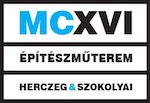| Location | Ajka, Krypton Factory |
| Investor | Ajka Municipality |
| Floor area | 2211 m2 |
| General designer | MCXVI Architects |
| Leading architect designer | László Herczeg, Mariann Fonyódi PhD |
| Architect designers | Bercel Dózsa, Gábor Hajdu, Gellért Nyitrai |
| Photos | Tamás Fenes |
| Status | completed |
| Project year | 2021 |
| Construction year | 2022 |
The Krypton Factory, built in 1935, was the first plant in the world where krypton gas could be produced in industrial quantities. Krypton gas was produced on the basis of Imre Bródy’s world patent, which as a new technology revolutionized lighting manufacturing in the 1930s and and elevated Tungsram to greatness. Today, the unique, historic industrial buildings of the valley stand abandoned in the forest, production long ceased, mines closed, and the structures lay dormant, awaiting discovery of their hidden beauty and potential. Throughout its history, the building served multiple industrial functions but suffered significant damage as time passed.
The renovation of the Kripton Factory began within the framework of the Veszprém-Balaton 2023 European Capital of Culture program, giving the building an event and exhibition function. In phase I, the primary focus was on preserving and restoring the existing structural elements, but it was also important to add elements that immediately made it suitable for hosting VEB 2023 events even in this phase. The steel-framed spatial structure, the brick facades, and the openings constitute are the main character and value of the building; thus, their restoration close to their original state was of paramount importance. In the architectural design, preserving the original industrial character was the primary consideration, the new functions were inserted with sensitive architectural solutions, so that they harmonize with the current structure and character of the building.
At this stage, the goal of the planning program was to create a community space by highlighting the features of the current building, while maximizing the opportunities provided by limited financial resources. In the first phase, the complete renovation of the ground floor and partial restoration of the facades were accomplished, adding a few elements in concentrated places, which gives this valuable building a contemporary look. On the main facade, the entrance is connected by a filigree portal box, which with its thin steel structures is adapted to the original openings of the building. During the cleaning of the interior, it received a new floor, and the central element became a staircase furniture that can also be used as a performance space. This renovation enabled the creation of a communal space within the house, capable of hosting events alongside the external areas, primarily during the summer season.

 Magyar
Magyar
